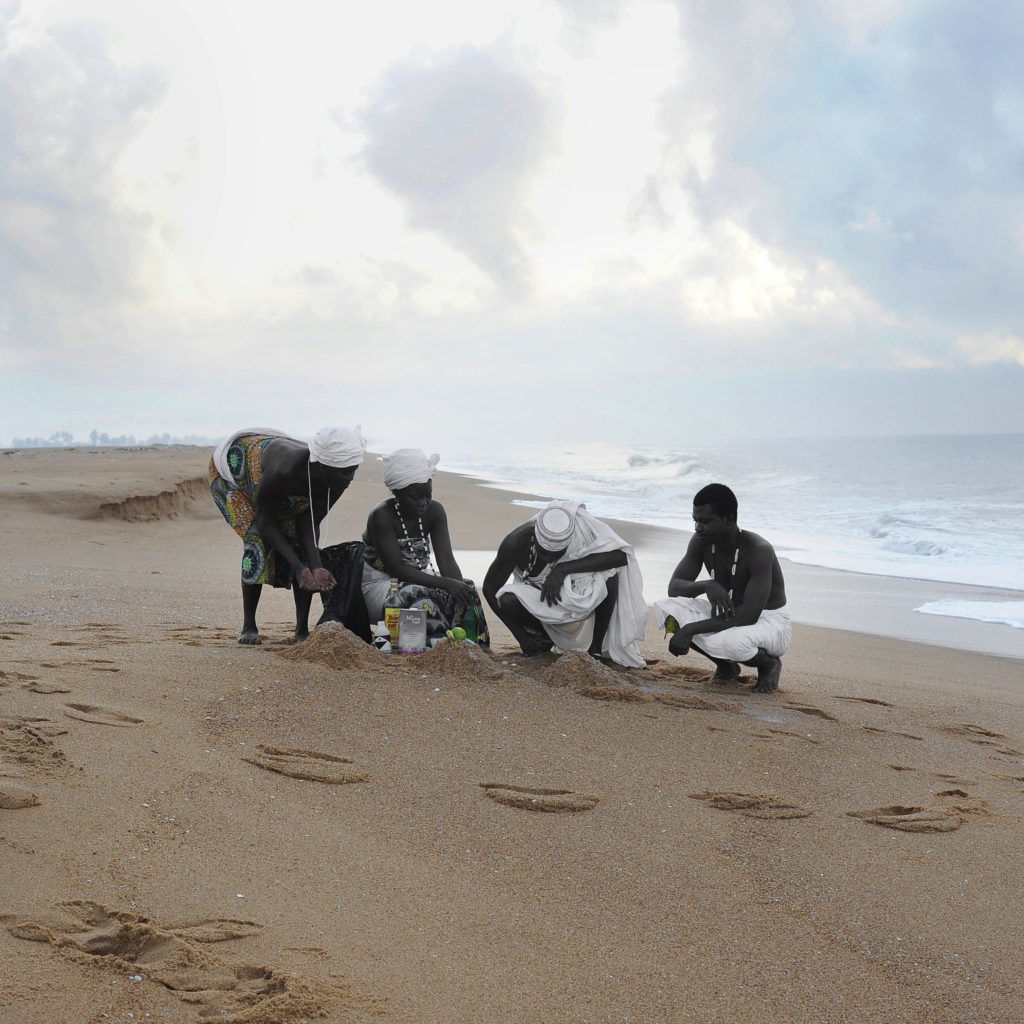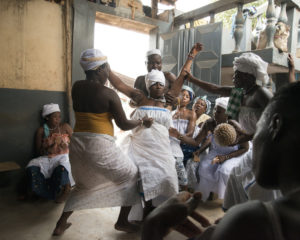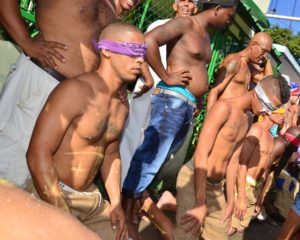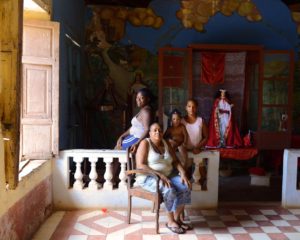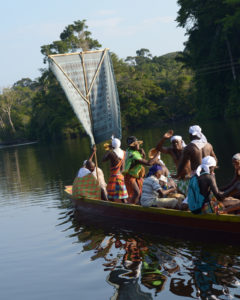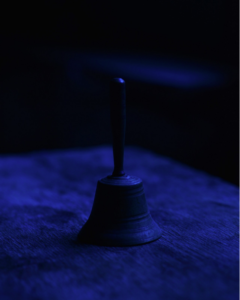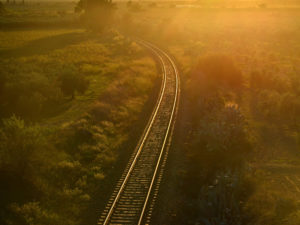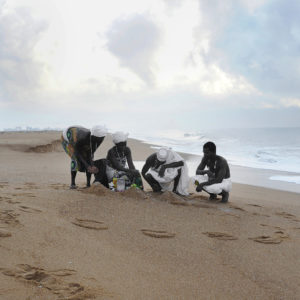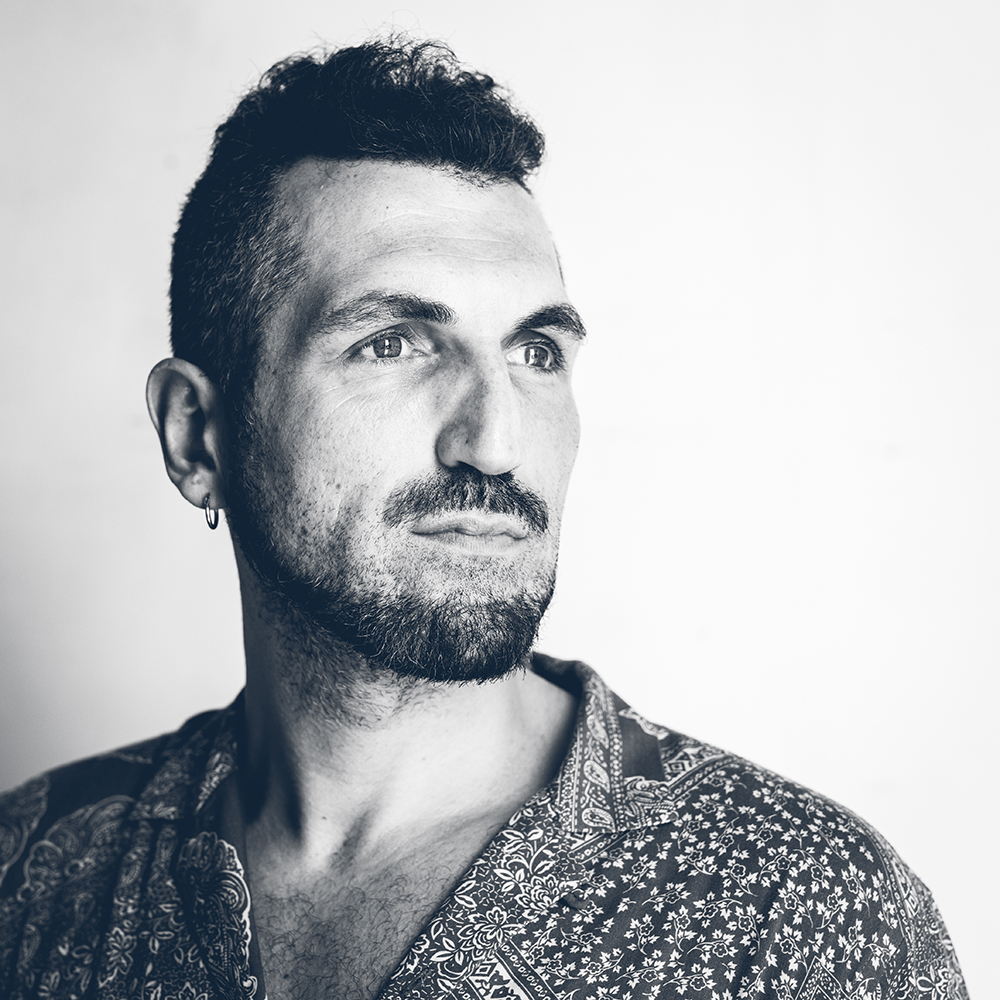EXPLORER
Nicola Lo Calzo is a photographer, queer artist and researcher (ENSAPC CYU) whose work falls within both the field of visual arts and of documentary photography. He is interested in the relationship between photography, memory and power. His work focuses on the uses of photography to question the memory of subaltern groups. Since 2010, he has been engaged in a photographic project on the memories of slavery and its resistance, the CHAM or KAM project. This project has been nominated for the Elysée and Niépce awards. His latest book Binidittu, has just been published by L'Artière. Nicola Lo Calzo is also a regular contributor to the international press, including Le Monde, The New Yorker, Internazionale.
Atlantic Fragments
In parallel with the exhibition "Marronnage, l'art de briser les chaines" at the Maison de l'Amérique latine in Paris, the Galerie Dominique Fiat is presenting the exhibition "Fragments Atlantiques", which brings together a selection of prints from the KAM project, in particular the Tchamba, Agouda, Regla, Obia and Binidittu series.
Developed in chapters, this project covers different territories in West Africa, Europe, the Caribbean and the Americas, taking the form of an open and evolving project, through a comparative, multi-sited and micro-historical approach. In each of the series, Lo Calzo aims to bring to light a counter-mapping of resistant bodies and minds in the face of the historical abyss of slavery and Atlantic deportation.
Lo Calzo's research focuses mainly on memories of resistance to slavery, largely based on unofficial and unwritten sources, or more rarely on written sources but mostly from the point of view of the dominant elites. These memories are inscribed and embodied in a multitude of cultural, musical, religious and martial practices that live on both sides of the Atlantic: the Abakuá religion in Cuba (Regla, 2016), the knowledge of the Obia in Guyana (Obia, 2015), Tchamba voodoo in Togo (Tchamba, 2017), the cult of Benedict the Moor in Latin America and in Sicily, to mention only those presented in this exhibition. They give us the lion's point of view as closely as possible, in the words of Chinua Achebe: "As long as lions do not have their own history, hunting stories will be written in the glory of the hunters".
Using documentary photography, complemented by elaborate captions and in-depth contextual information, interviews and recordings, Nicola Lo Calzo brings us closer to his practices by proposing that we think of them as "linked, connected and relayed" (Touam Bona, 2021) to one another, while taking into account their own specificities. It also proposes to understand them in terms of the cultural, symbolic and memorial value claimed or recognised by the communities or groups themselves and, at the same time, in terms of the heritage and historical value accorded by society and local, national and international authorities.
In this sense, the memorial practices photographed by Lo Calzo are at once living subcultures, intangible heritages to be protected and living archives to be apprehended.
